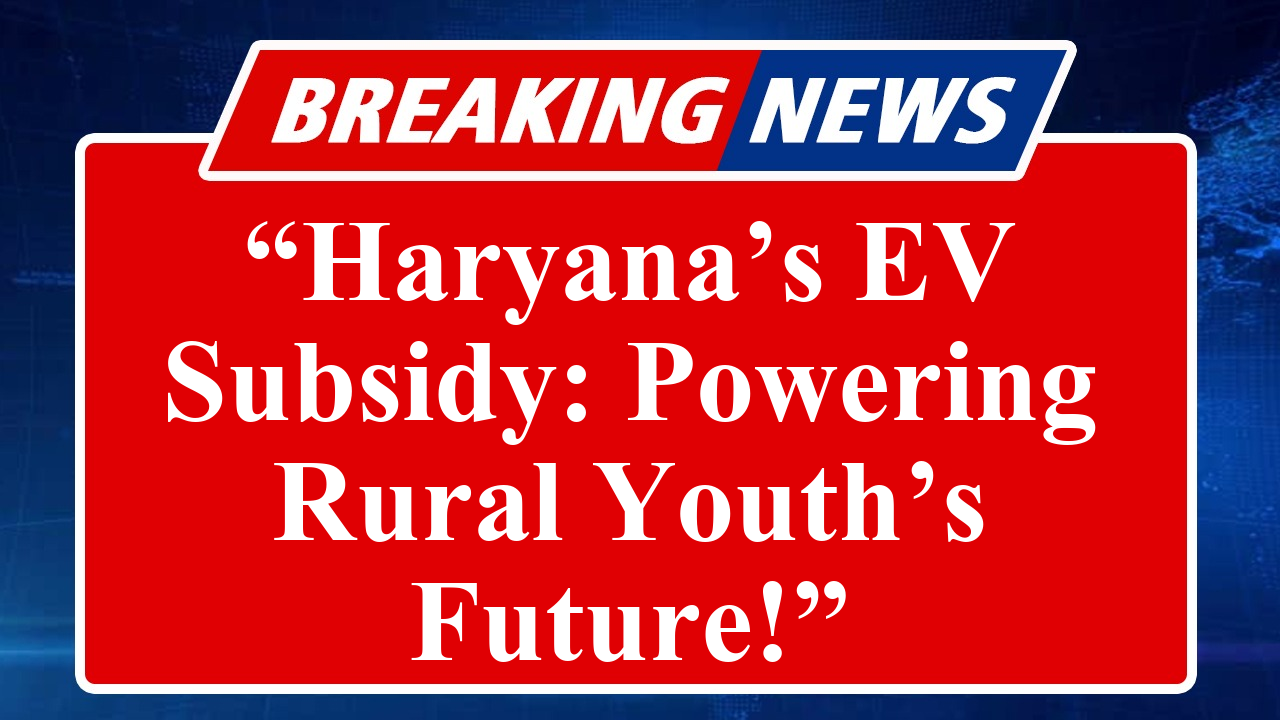Haryana’s government launched a new electric vehicle subsidy scheme on June 23, 2025, targeting rural youth to promote sustainable mobility. Offering up to ₹50,000 subsidies on e-bikes and e-rickshaws, the initiative aims to enhance employability and reduce carbon emissions. Over 10,000 applications were received within days, signaling strong rural demand for eco-friendly transport.
Haryana Rolls Out EV Subsidy for Rural Youth
On June 23, 2025, the Haryana government unveiled a transformative electric vehicle (EV) subsidy scheme aimed at empowering rural youth. The initiative, part of the state’s broader push for sustainable development, offers financial incentives to young individuals aged 18–35 in rural areas to purchase electric two-wheelers and e-rickshaws. The scheme provides subsidies of up to ₹50,000 for e-bikes and ₹75,000 for e-rickshaws, alongside zero registration fees and low-interest loans facilitated through the Haryana Rural Development Fund.
The program targets 50,000 rural youth in its first phase, focusing on districts like Rohtak, Hisar, and Yamunanagar, where access to affordable transport remains a challenge. Officials reported that within 72 hours of the scheme’s launch, over 10,000 applications were filed through the state’s dedicated online portal. “This is a game-changer for rural youth, enabling them to access jobs and entrepreneurial opportunities while contributing to a cleaner environment,” said a spokesperson from the Haryana Transport Department.
The subsidy is paired with skill development programs to train youth in EV maintenance and operation, ensuring long-term employability. Local manufacturers, including Hero Electric and Okinawa, have partnered with the government to supply vehicles at discounted rates. The initiative also aligns with Haryana’s goal of achieving 20% EV adoption by 2030, with a focus on reducing diesel dependency in rural areas.
Data from the Haryana Renewable Energy Department indicates that rural areas account for 60% of the state’s vehicular emissions. By incentivizing EVs, the government aims to cut carbon emissions by 15% in these regions over the next five years. The scheme has been lauded by environmentalists, though some critics argue that inadequate charging infrastructure in rural areas could hinder its success. The government has promised to install 500 new charging stations across rural Haryana by mid-2026.
Disclaimer: This article is based on information from government announcements, official statements, and local news reports. Data is sourced from the Haryana Transport Department and Renewable Energy Department as of June 23, 2025. Readers are advised to verify details through official channels.

